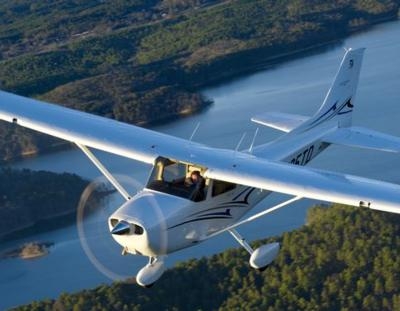Tue, May 08, 2018
Non-IFR Pilot Was Flying On A Moonless Night Over The Ocean
The NTSB has released a probable cause report from an accident which occurred on July 4, 2016, about 2300 Pacific daylight time. A Cessna 172F impacted the Pacific Ocean shortly after takeoff from Brookings Airport (BOK), Brookings, Oregon. The private pilot and two passengers were fatally injured, and the airplane was destroyed. The airplane was registered to Cessna 7870U, LLC, and was operated by the pilot as a personal flight. Night VFR conditions prevailed for the third leg of the cross-country flight, and no flight plan was filed. The destination was Grants Pass Airport, Grants Pass, Oregon.

According to the report, the non-instrument-rated pilot departed for the third leg of a cross-country flight in the airplane during dark (moonless) night conditions. The departure path was toward the ocean and over an area with few ground-based light sources to provide visual cues. A witness heard an airplane flying nearby and assumed that it was taking off from the airport. As the airplane continued, he heard a reduction in engine power, like a pilot throttling back while landing.
According to the witness, the engine did not sputter. Review of the recorded radar data showed that the airplane turned left shortly after takeoff and climbed to about 700 ft above ground level as it passed near the witness's location. The airplane did not arrive at its destination, and a search was initiated. The wreckage of the airplane was found in ocean waters about 2 miles west of the departure airport. Although visual meteorological conditions prevailed, no natural horizon and few external visual references were available during the departure. This required the pilot to monitor the flight instruments to maintain awareness of the airplane's attitude and altitude. Given the lack of external visual cues and the the pilot's lack of recent night flight experience and his lack of an instrument rating, it is likely that the pilot became spatially disorientated during the departing left turn.
The main wreckage was not recovered. Therefore, it could not be determined whether any preimpact mechanical malfunctions or anomalies were present.
The National Transportation Safety Board determines the probable cause(s) of this accident to be the pilot's spatial disorientation and loss of situational awareness during the departure turn in dark night conditions, which resulted in an in-flight collision with water.
(Source: NTSB news release. Image from file. Not accident airplane)
More News
Pilot Also Reported That Due To A Fuel Leak, The Auxiliary Fuel Tanks Were Not Used On June 4, 2025, at 13:41 eastern daylight time, a Piper PA-23, N2109P, was substantially damage>[...]
From 2023 (YouTube Edition): Reflections on War’s Collective Lessons and Cyclical Nature The exigencies of war ought be colorblind. Inane social-constructs the likes of racis>[...]
Pilot Reported That He Was Unfamiliar With The Single Seat Amateur-Built Airplane And His Intent Was To Perform High-Speed Taxi Testing Analysis: The pilot reported that he was unf>[...]
From 2023 (YouTube Edition): First Kits to Ship October 2023 Having formerly resurrected the storied shape of the Ryan ST—in effigy, anyway—Montrose, Colorado-based Tim>[...]
Performance-Based Navigation (PBN) [ICAO] Area navigation based on performance requirements for aircraft operating along an ATS route, on an instrument approach procedure or in a d>[...]
 NTSB Prelim: Piper PA-23
NTSB Prelim: Piper PA-23 Classic Aero-TV: One Mans Vietnam
Classic Aero-TV: One Mans Vietnam NTSB Final Report: Capella Aircraft Corp FW1C50
NTSB Final Report: Capella Aircraft Corp FW1C50 Classic Aero-TV: Timber Tiger Touts Curtiss Jenny Replicas
Classic Aero-TV: Timber Tiger Touts Curtiss Jenny Replicas ANN's Daily Aero-Term (07.04.25): Performance-Based Navigation (PBN) [ICAO]
ANN's Daily Aero-Term (07.04.25): Performance-Based Navigation (PBN) [ICAO]



